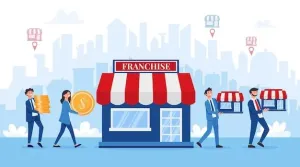How to Approach the Lyft Data Science Take-Home Challenge
- account_circle admin
- calendar_month Sel, 16 Sep 2025
- visibility 920
- comment 0 komentar

How to Approach the Lyft Data Science Take-Home Challenge
Mastering the Lyft Data Science Take-Home Challenge: A Strategic Guide
KlikBabel.com – How to Approach the Lyft Data Science Take-Home Challenge. Landing a data science role at a leading tech company like Lyft is a highly competitive endeavor, and the take-home challenge often stands as one of the most significant hurdles. Far from a mere coding exercise, the Lyft data science take-home assignment is designed to assess your end-to-end analytical capabilities, problem-solving skills, and your ability to translate complex data into actionable business insights relevant to a dynamic marketplace.
This article provides a high-quality, unique guide on how to strategically approach and excel in the Lyft data science take-home challenge, drawing insights from successful candidates and industry best practices.

How to Approach the Lyft Data Science Take-Home Challenge
Understanding the Core Purpose of the Lyft Take-Home
Before diving into the “how,” it’s crucial to grasp the “why.” Lyft, a company at the intersection of transportation, technology, and marketplace dynamics, uses this challenge to evaluate:
- Technical Proficiency: Your command of SQL for data extraction and manipulation, and Python or R for statistical analysis, modeling, and visualization.
- Problem-Solving & Analytical Thinking: Your ability to break down ambiguous problems, formulate hypotheses, and design appropriate analytical approaches.
- Product & Business Sense: How well you understand Lyft’s business model, key metrics, and can provide recommendations that drive real-world impact.
- Communication Skills: Your capacity to clearly articulate your methodology, findings, limitations, and recommendations to both technical and non-technical audiences.
- Time Management: Your ability to deliver high-quality work within a given timeframe.
The challenge typically revolves around real-world scenarios Lyft data scientists face, such as optimizing driver supply, improving rider experience, evaluating new feature launches, or understanding marketplace health.
Deconstructing the Lyft Data Science Take-Home Prompt
The very first step, and arguably the most critical, is to thoroughly understand the prompt. Don’t rush into coding.
- Read Carefully, Multiple Times: Identify the core question(s) being asked. What problem is Lyft trying to solve?
- Identify Key Metrics: What metrics are relevant to the problem? How would you define success or failure? For Lyft, this could involve ETA, ride cancellations, driver utilization, conversion rates, or user engagement.
- Clarify Ambiguities: If anything is unclear, don’t hesitate to ask clarifying questions. This demonstrates proactive engagement and critical thinking, showing you value accuracy over assumptions. Often, the prompt is intentionally vague to test your ability to structure an ambiguous problem.
- Define Scope & Constraints: Understand the dataset provided (if any), the expected output (report, presentation, code), and any time limits.
A Strategic Step-by-Step Approach to the Challenge
Phase 1: Data Exploration & Hypothesis Generation
Once you understand the prompt, immediately move to exploratory data analysis (EDA).
- Initial Data Scan: Familiarize yourself with the dataset. What tables are available? What do the columns represent? Check data types, missing values, and potential outliers.
- Formulate Hypotheses: Based on the prompt and your initial data scan, brainstorm potential hypotheses. For example, if the problem is about ride cancellations, your hypotheses might include “Cancellations are higher during peak hours” or “Drivers with lower ratings have higher cancellation rates.” This structured thinking guides your analysis.
- Visualize Key Trends: Use basic visualizations (histograms, scatter plots, line charts) to identify patterns, relationships, and anomalies. This helps confirm or refine your hypotheses.
Phase 2: SQL for Data Extraction & Feature Engineering
Lyft relies heavily on data stored in relational databases. Your SQL skills will be rigorously tested.
- Precise Querying: Write efficient and accurate SQL queries to extract the necessary data. Be mindful of joins, aggregations, and filtering.
- Feature Engineering: Often, the raw data isn’t directly usable. Use SQL to create new features that might be more predictive or insightful. For instance, calculating average trip distance, time of day, or driver acceptance rates.
- Data Integrity: Ensure your SQL extracts clean and consistent data, handling edge cases and nulls appropriately.
Phase 3: In-Depth Analysis & Modeling (Python/R)
This is where you apply statistical methods and potentially machine learning.
- Statistical Analysis: Depending on the prompt, you might perform A/B test analysis, regression analysis, time-series forecasting, or other statistical tests. Justify your choice of method.
- Model Selection & Implementation: If a predictive model is required, choose an appropriate model (e.g., linear regression, logistic regression, tree-based models). Clearly explain your model choice, assumptions, and evaluate its performance using relevant metrics.
- A/B Testing Scenarios: Many Lyft problems involve evaluating new features. Demonstrate your understanding of experimental design, statistical significance, and how to interpret A/B test results to make recommendations.
- Visualizations: Create compelling, clear, and informative visualizations that tell a story with your data. Label axes, provide titles, and use appropriate chart types.
Phase 4: Interpretation, Recommendations & Business Impact
Technical prowess alone isn’t enough. You must translate your findings into actionable insights.
- Connect Back to the Problem: How do your findings directly address the original problem statement?
- Interpret Results: Explain what your analysis means in plain language. What did you discover?
- Formulate Recommendations: Based on your insights, provide clear, concise, and actionable recommendations for Lyft. Quantify the potential impact of these recommendations whenever possible (e.g., “Implementing X could reduce cancellations by Y%”).
- Consider Trade-offs & Limitations: Acknowledge any assumptions made, limitations of your data or analysis, and potential risks or trade-offs associated with your recommendations. This shows a mature and realistic understanding.
Phase 5: Communication – The Final Report/Presentation
Your communication is as important as your analysis.
- Structured Report: Organize your findings logically. A common structure includes:
- Executive Summary: A concise overview of the problem, key findings, and recommendations. (Crucial for busy executives).
- Problem Statement: Reiterate the challenge.
- Methodology: Explain your approach, data sources, and analytical techniques.
- Key Findings: Present your results, supported by visualizations.
- Recommendations: Actionable steps with anticipated impact.
- Limitations & Future Work: Acknowledge areas for improvement.
- Clarity & Conciseness: Avoid jargon where possible. Explain technical terms if necessary.
- Storytelling with Data: Weave your findings into a compelling narrative that guides the reader through your thought process and conclusions.
Common Pitfalls to Avoid
- Lack of Business Context: Focusing purely on technical analysis without linking it to Lyft’s business goals.
- Over-Engineering: Implementing overly complex models when a simpler approach would suffice or be more interpretable.
- Poor Communication: Unclear explanations, messy code, or confusing visualizations.
- Not Addressing the Prompt Fully: Missing key aspects of the original question.
- Ignoring Assumptions: Failing to state or test assumptions made during analysis.
- Messy Code: Unorganized, uncommented, or inefficient code.
Tips for Standing Out
- Proactive Insights: Don’t just answer the question; offer additional insights or follow-up questions that demonstrate curiosity and a deeper understanding.
- Quantify Impact: Whenever possible, put numbers to your recommendations.
- Clear Code & Documentation: Ensure your code is clean, well-commented, and easy to follow. Provide a
READMEfile if necessary. - Attention to Detail: Proofread your report meticulously. Small errors can detract from your overall presentation.
- Be Resourceful: If you encounter a roadblock, explain your thought process for overcoming it, or what additional data/resources you would seek.
By adopting this strategic, multi-faceted approach, you significantly increase your chances of not just completing, but excelling in the Lyft data science take-home challenge, demonstrating your readiness for a high-impact role.
FAQ
1. How much time should I dedicate to the Lyft take-home challenge?
Most companies allocate 3-5 days for their take-home challenges. It’s crucial to clarify the exact deadline. While you shouldn’t spend every waking hour on it, dedicate focused blocks of time. Prioritize understanding the prompt, structuring your approach, and delivering a well-articulated solution over chasing perfection or over-engineering. Effective time management is part of the assessment.
2. What if I encounter a problem I don’t know how to solve, or data I can’t interpret?
It’s okay to acknowledge limitations. If you encounter a technical challenge you can’t fully resolve, explain your thought process, what approaches you considered, why they didn’t work, and what steps you would take if you had more time or resources (e.g., “I would explore X machine learning model, but due to time constraints, I focused on Y statistical method”). For ambiguous data, state your assumptions clearly and justify them. Proactiveness in asking clarifying questions at the outset can also prevent many such issues.
3. Should I prioritize complex models or clear communication and business impact?
Always prioritize clear communication and demonstrating business impact. While technical proficiency is essential, a complex model that isn’t clearly explained, or whose insights aren’t translated into actionable recommendations, is less valuable than a simpler, well-communicated analysis that directly addresses the business problem and provides clear value. Lyft seeks data scientists who can drive real-world outcomes, not just build sophisticated algorithms in a vacuum.
- Penulis: admin












Saat ini belum ada komentar